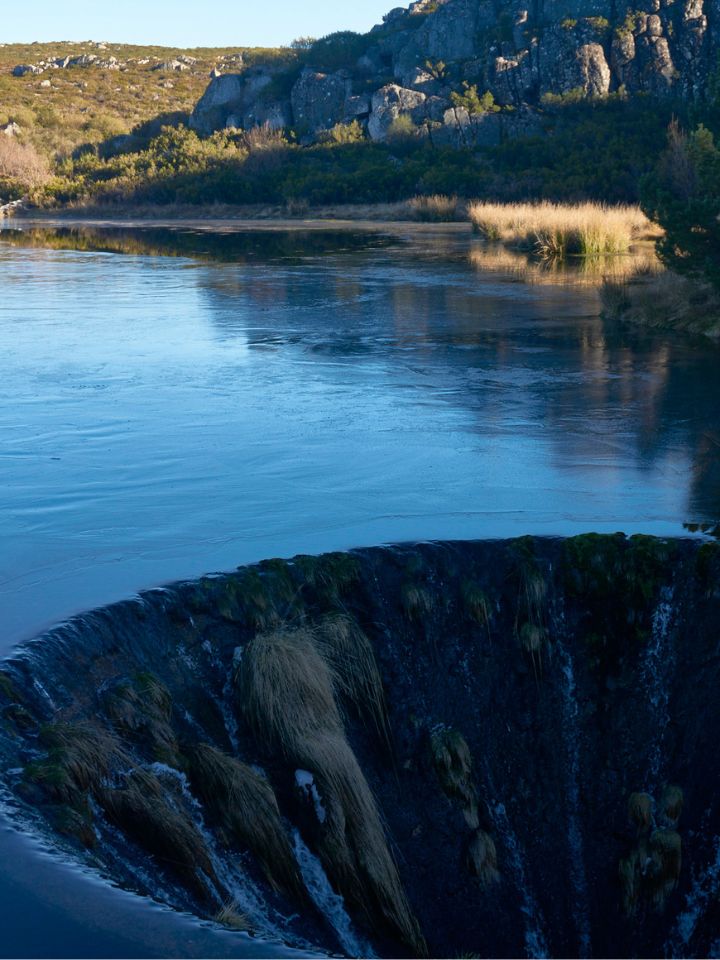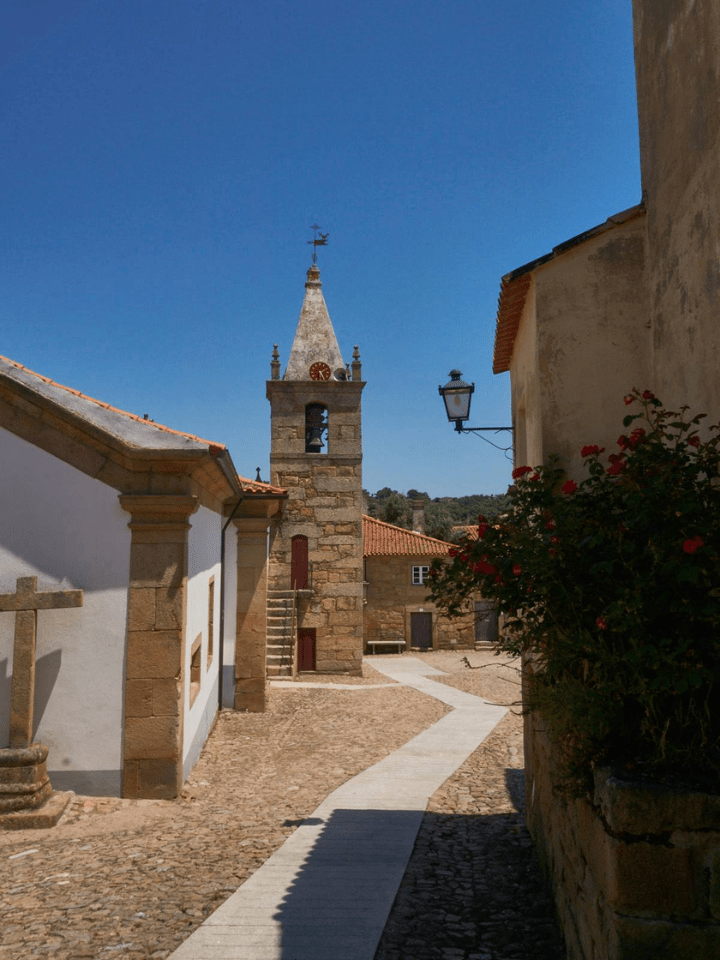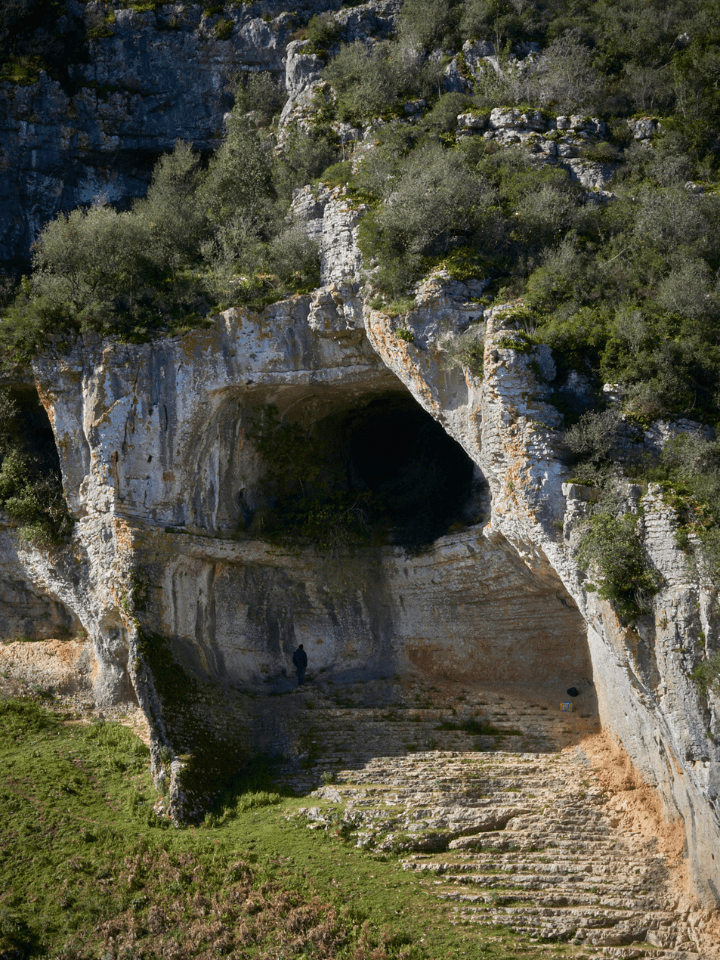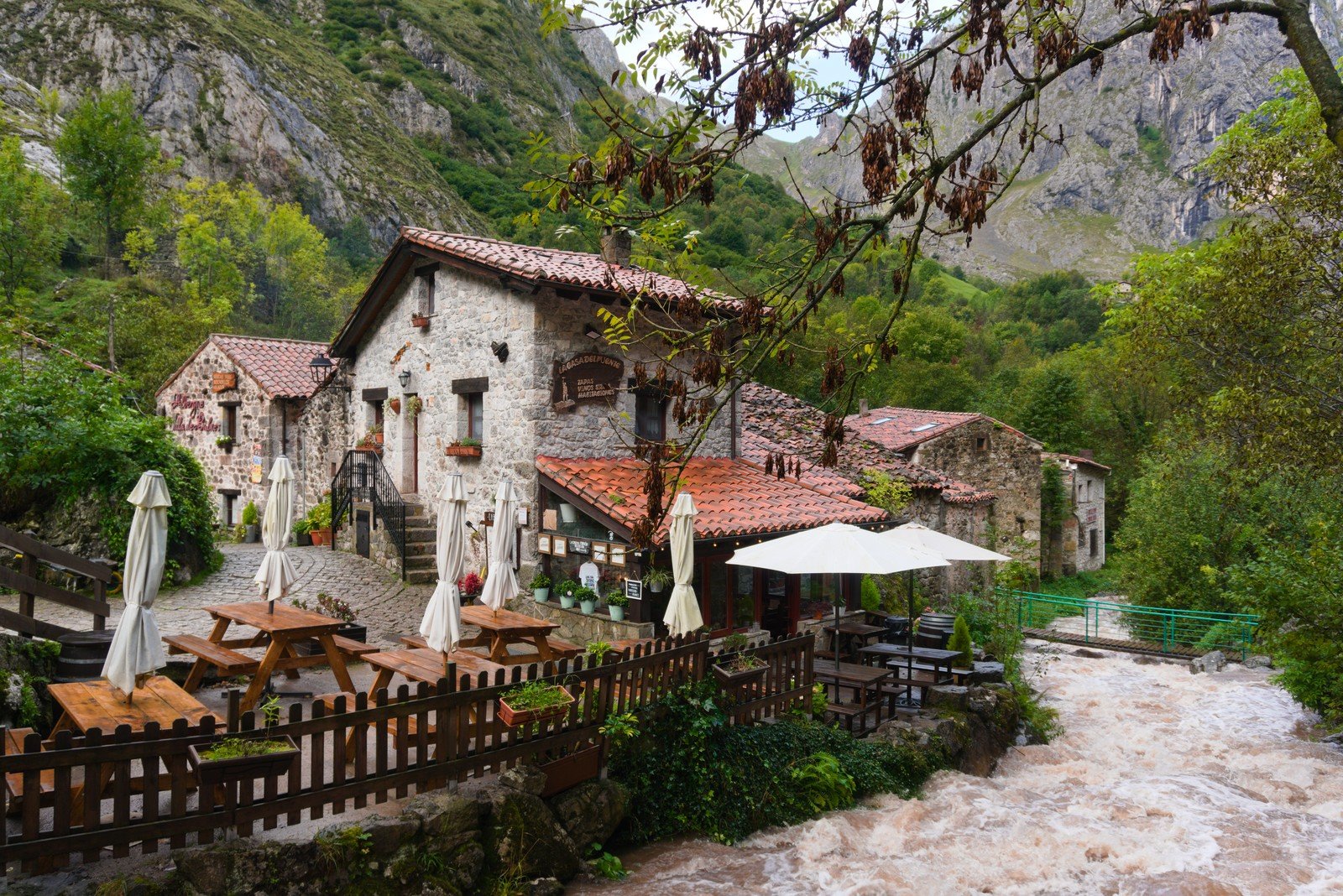
Bulnesin the middle of the Picos de Europa National Park, it was once the most isolated village in Asturias, and its only access was via a long path which, in the colder months, was even more complicated. Today it is still the only village in Asturias without access to cars and, consequently, the only village without cars.
Founded by shepherds, the village is located around 650 meters above sea level, surrounded by high mountains, some of which are over 1,500 meters high.
In order to combat this isolation, construction began on the famous Bulnes cable car at the end of the 1990s, an impressive feat of engineering that put Bulnes just 8 minutes away from Poncebos. It is this 'funicular' that allows the inhabitants of the village (who travel for free) to transport goods, animals and even small means of transport, such as farm tractors.
Officially opened in 2001, this funicular and the village to which it leads have become a real tourist attraction for those visiting the European Peaks.
Nowadays, only a few people live in Bulnes, which is divided between houses - some in ruins, many dedicated to tourism. Although small, the village is still divided in two: Bulnes de Abajo, also known as La Villa (the one closest to the cable car) and Bulnes de Arriba, also known as El Castillo.
How to get to Bulnes
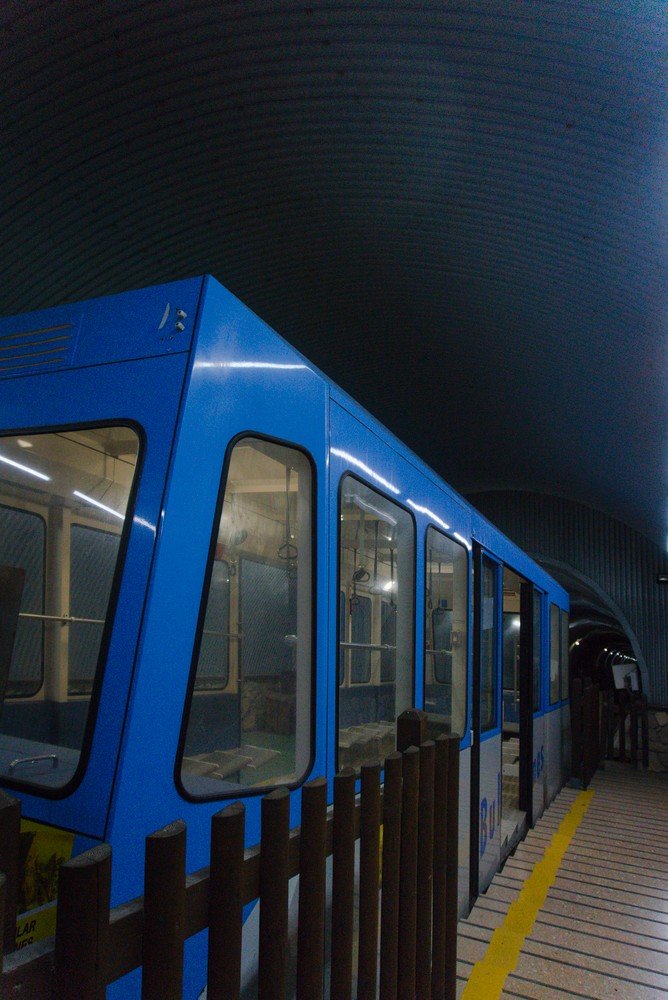
The journey on the Bulnes Funicular takes about 8 minutes and goes for 2.227 meters (which corresponds to around 16.71km/h), with an average steepness of 18.19%.
There are two carriages that always run alternately.
The trip itself is a very interesting experience: it gives you the feeling of being a miner entering a mine. The price ends up being a bit discouraging: €17.61 / adult, one way only, or 22.16€ / adult, two ways (2024).
Tickets are bought on the way up or down the funicular and take place every 30 minutes (in high season) from 10am. In low season, the Funicular does not operate during lunchtime.
In our case, we took the first one of the day at 10am and got off at around 11.30am. The funicular still holds a large number of people (standing and seated), but only makes around 20 trips each way per day in high season.
To take the funicular up, you have to go to Poncebos. Please note that, although there are places for parking next to the funicular (available to its users), there are few spaces and, especially in high season, it can be complicated and confusing. We therefore recommend leaving your car at the Arenas de Cabrales parking lot (coordinates here) or in the Las Arenas - Ovar parking lot (here, the latter of which is 2km from the funicular. From these parking lots, there is frequent transportation to the base of the funicular, run by Alsa and costing €1.55 / one way / adult (in 2024). In our case, we went by bus and we highly recommend it - the price (€3.10 round trip) completely justifies the stress you avoid in the parking lot. Check the timetables in advance, as there are some hours after lunch when there are usually no buses.
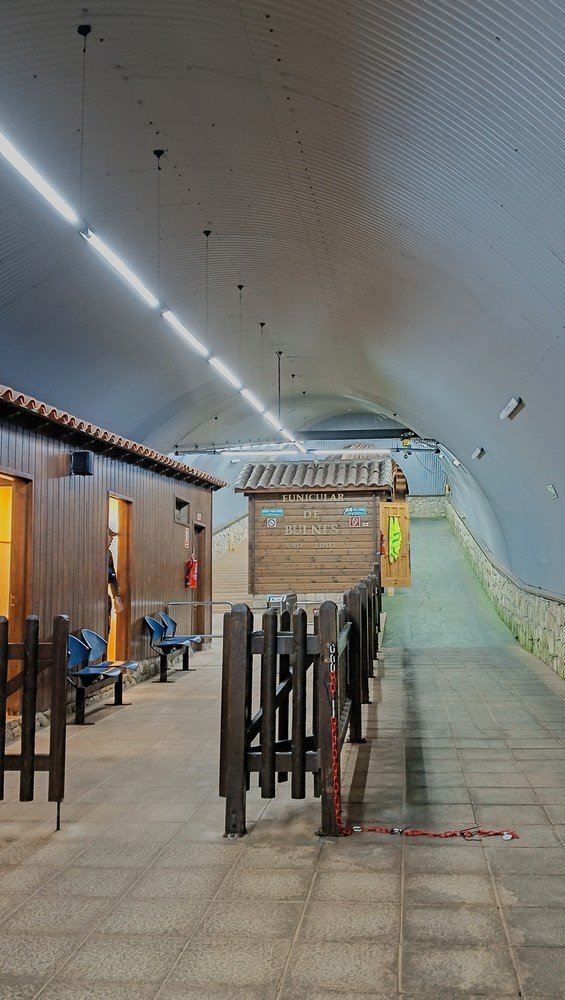
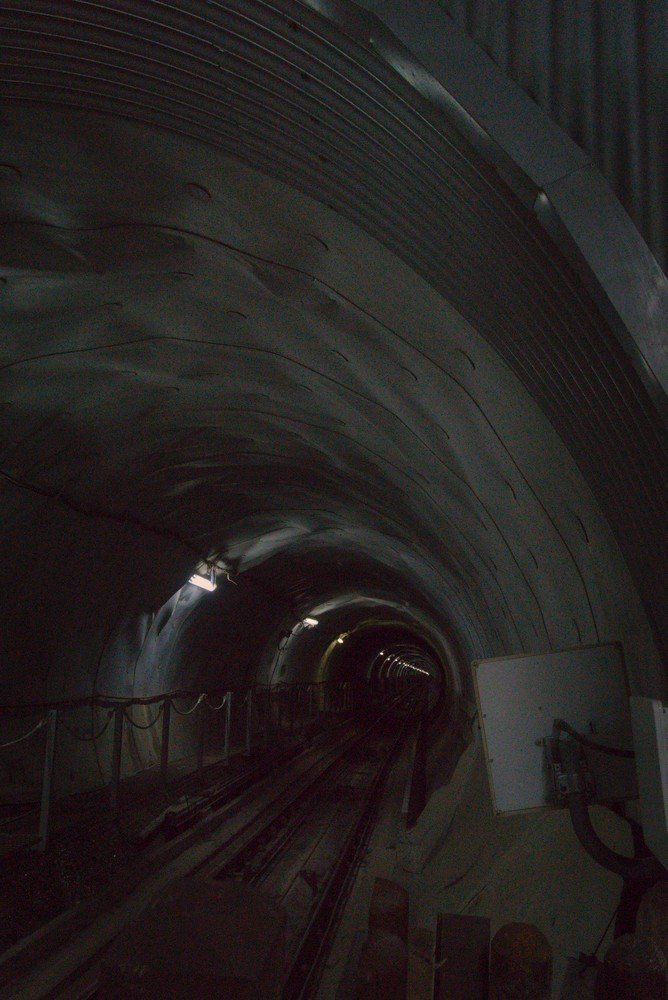
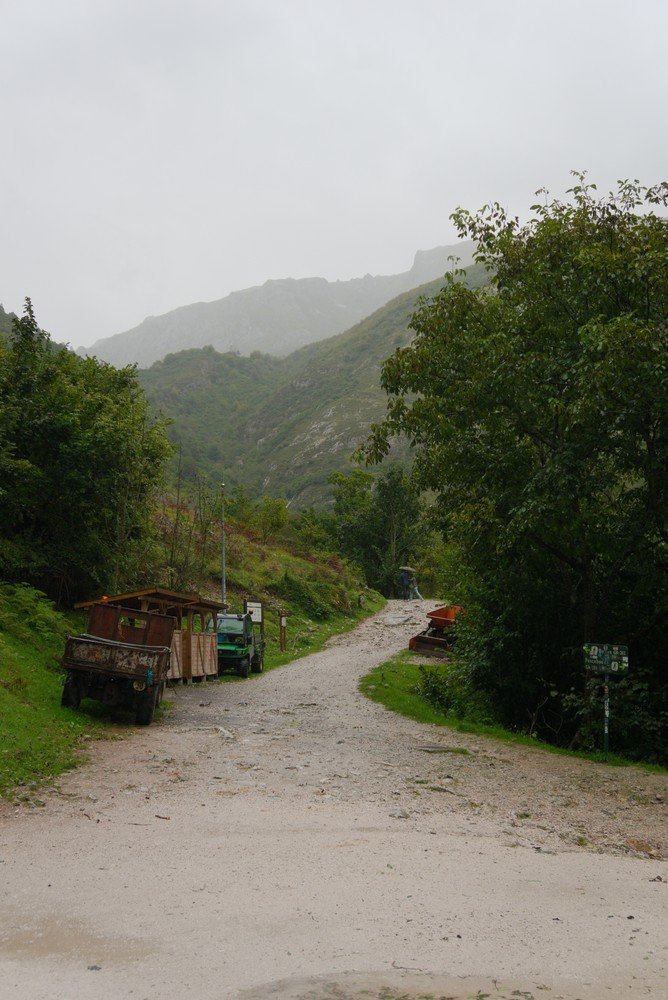
You can also get to Bulnes via a trail that starts in Poncebos. There are about 4Km (each side), which always takes about 2 hours. We didn't end up doing this route due to lack of time, but we were told that, although it's short, it's a route with some uphill climbing and incredible views - there are slopes of up to 18%.
Getting to know Bulnes de Abajo (“La Villa“)
When you reach the top of the funicular (either by the trail or the funicular itself), you have to follow a dirt road for about 350 / 400 meters, which takes you to Bulnes de Abajo.
The first building, which will appear on your left, consists of the Virgen de Las Nieves Chapel, in front of the village cemetery. This small hermitage was abandoned for over 60 years and was rebuilt in 2014. Every year there is a festival in honor of the Virgen de las Nieves in August. Next to the hermitage are the ruins of the ”rectory house”.
Just opposite, is what appears to be an abandoned church, with its bells at the top.
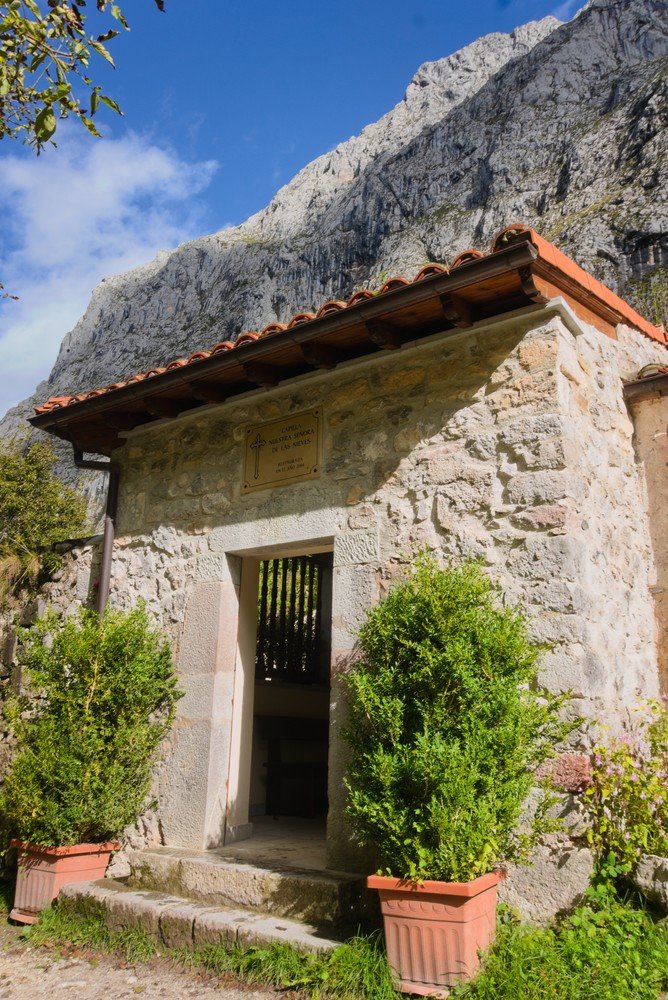
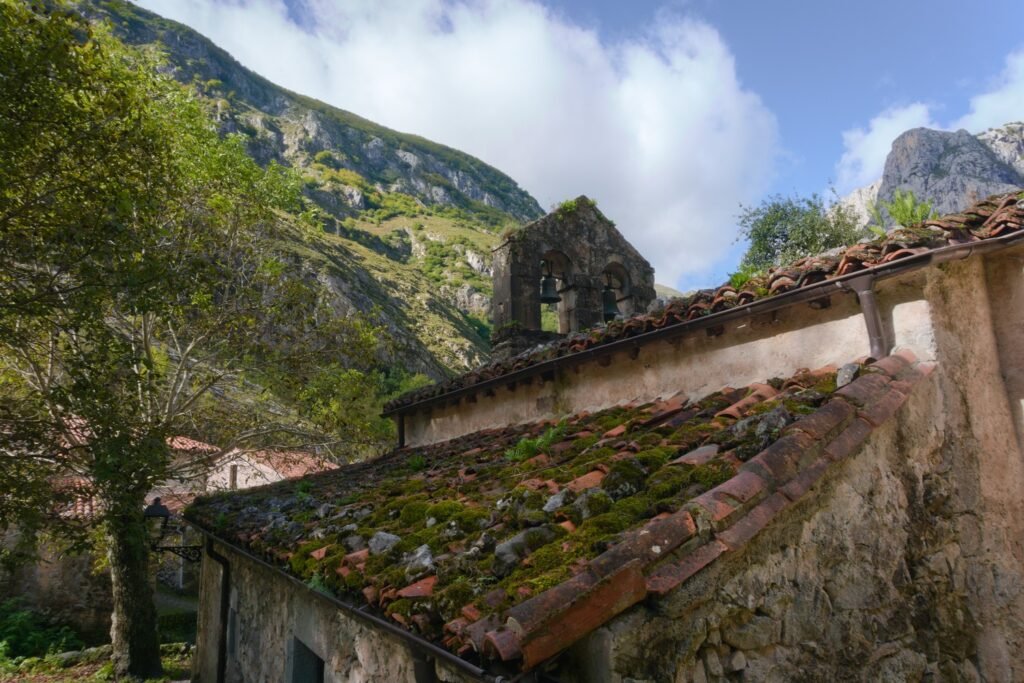
Heading towards the village, we find one of the most emblematic images: the bridge over the Tejo River (which, despite its name, is not the one that flows into Portugal) and, on the other bank, the typical houses of Bulnes.
From here, explore the streets and get to know the typical houses, the various businesses and don't forget to stop for a bite to eat overlooking the river.
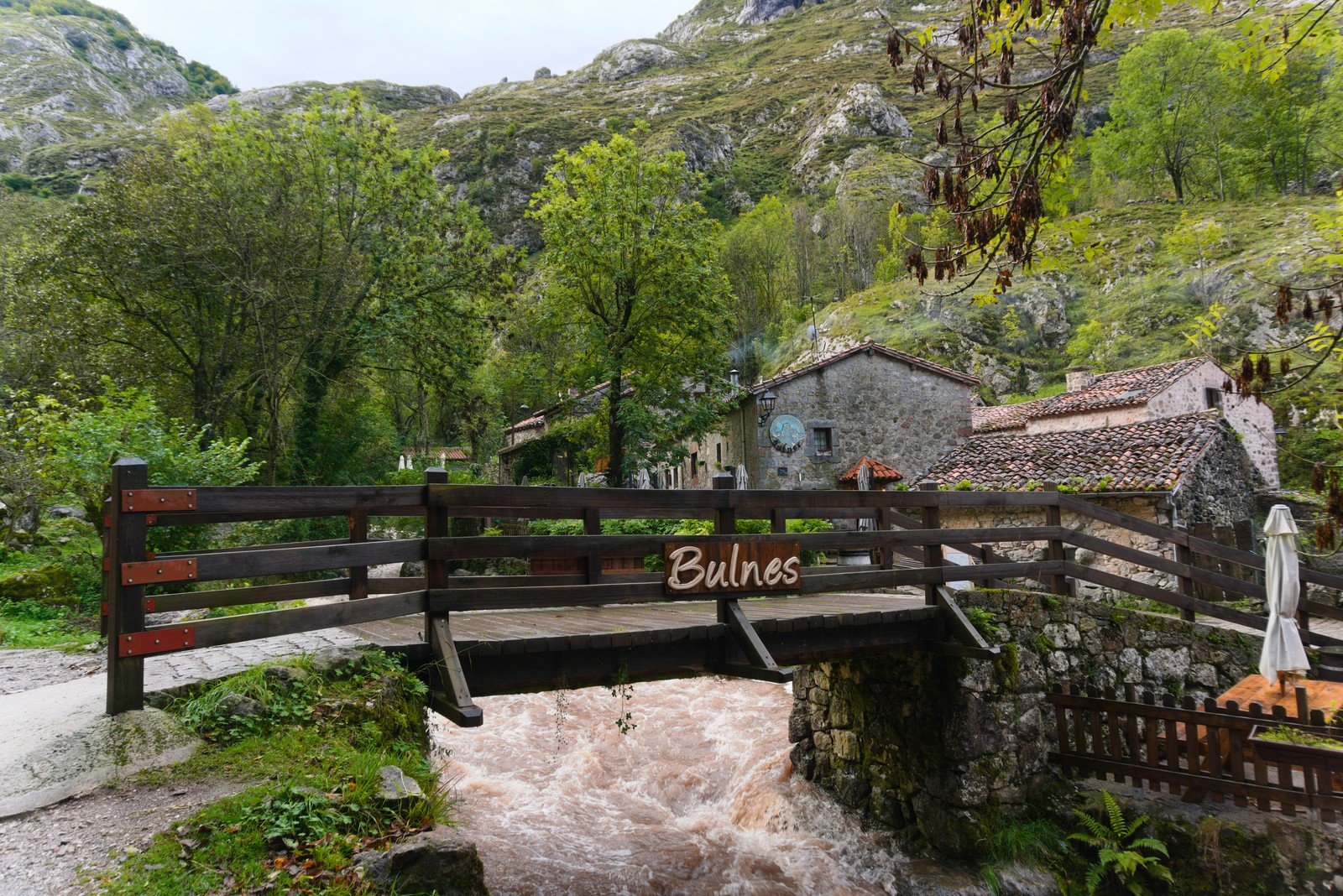
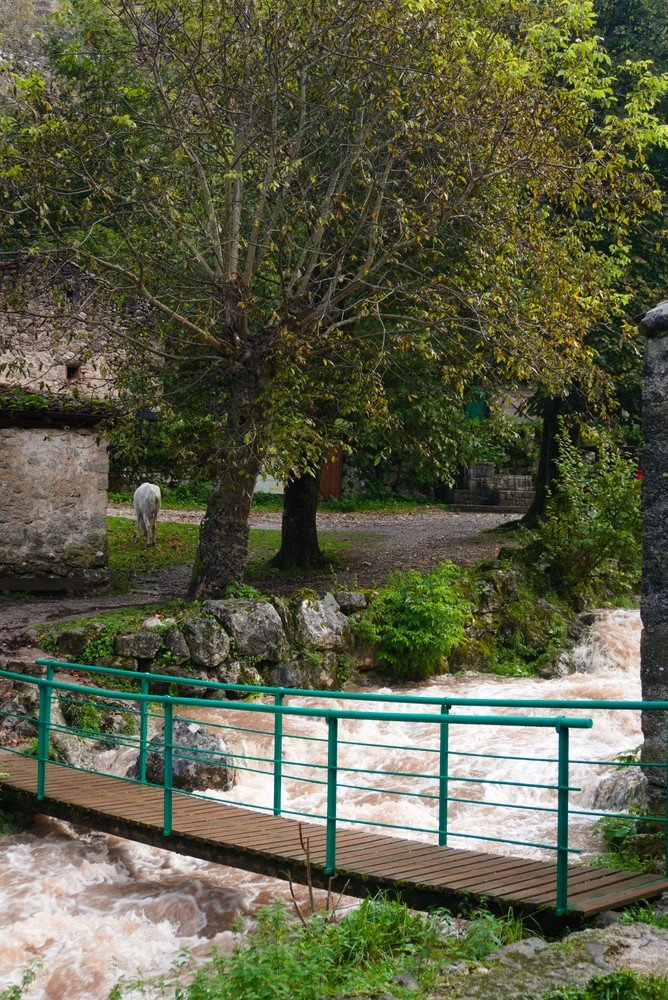
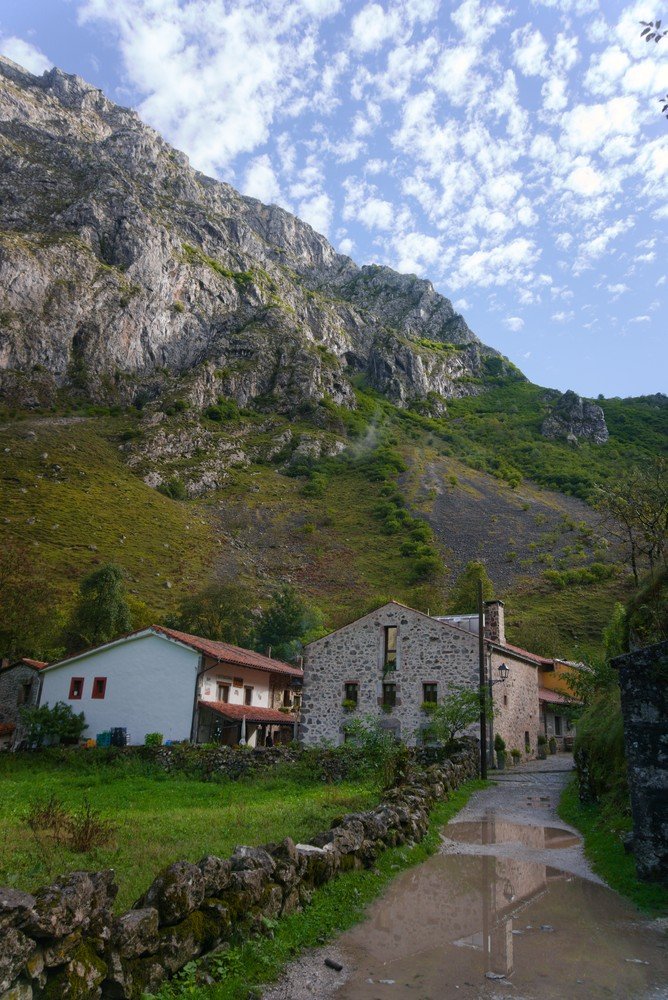
Getting to know Bulnes de Arriba (“El Castillo“)
After visiting Bulnes de Abajotake the road to the right where there is a sign indicating El Castillo: it's the way to Bulnes de Arriba. The walk takes about 600 meters, going up along a concrete road that takes you to the highest part of Bulnes. On this short route it's natural to pass loose cattle and/or shepherds.
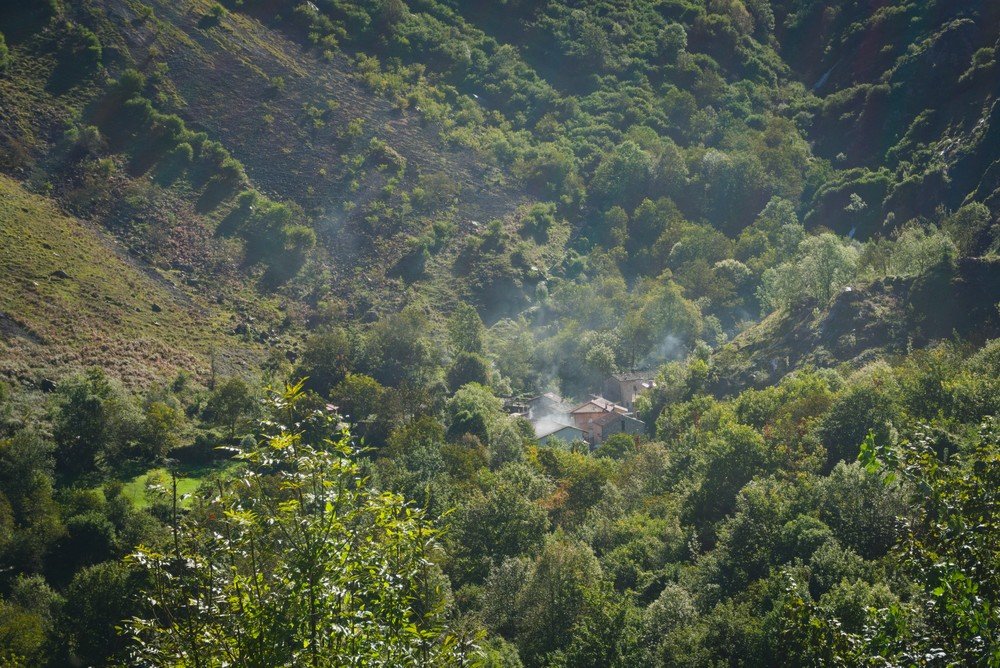

Although this area has more abandoned houses, the view is breathtaking. Take the opportunity to continue to the end of the path, to the Mirador Bar Lallende, where they have a privileged view over the road that leads to Poncebos.
For those who have decided to return on foot, you can choose to go down here, following the signpost, instead of returning to Bulnes de Abajo.
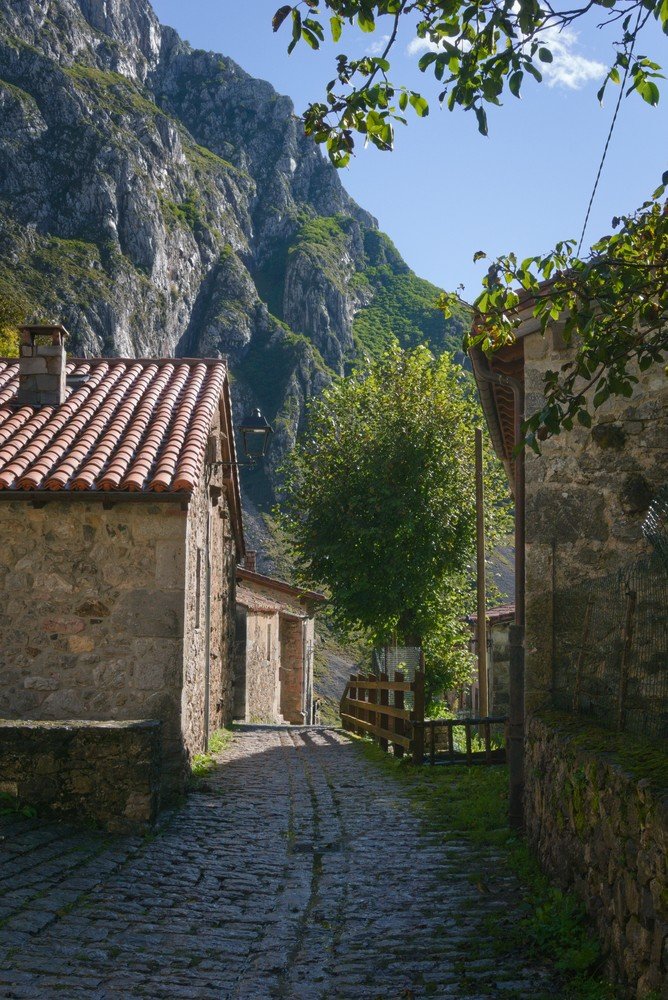
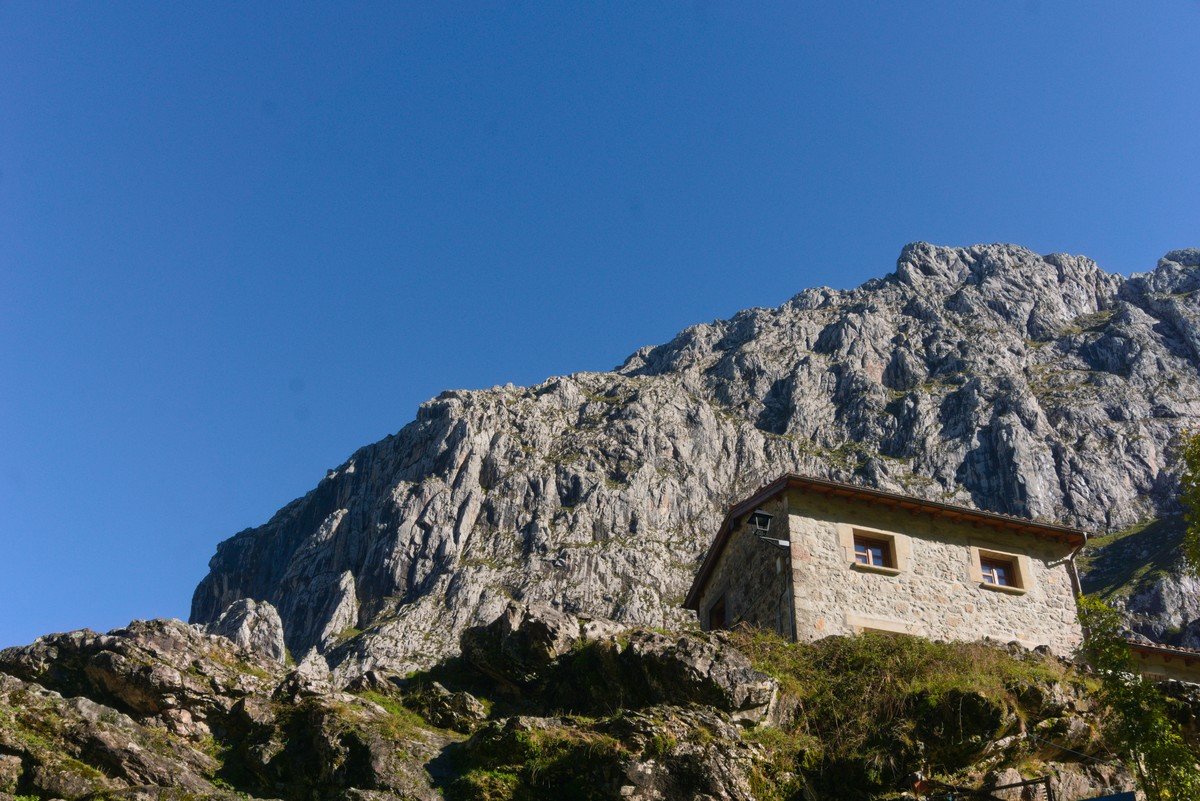
Trails - Picu Urriellu and Sotres
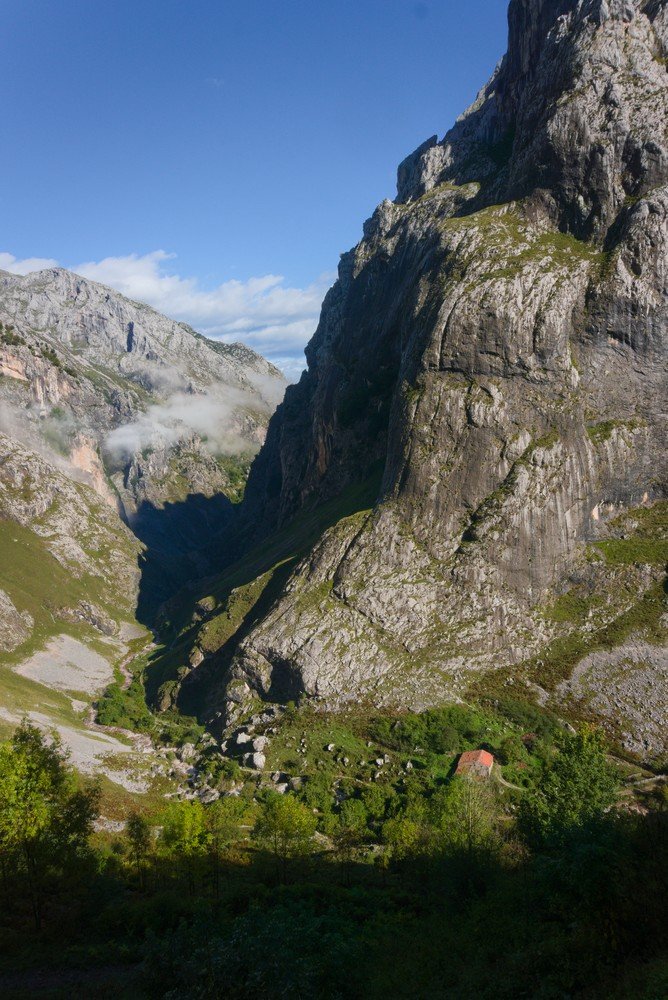
In Bulnes you will also find a trail that leads to the famous Naranjo de Bulnes / Urriellu Peak. However, from here it's about a 4h30 walk each way. Alternatively, some people leave their car in a dirt parking lot between Bulnes and Sotres (here), thus avoiding a few kilometers. If you decide to do this trail, bear in mind that it is considered a physically difficult trail, with steep climbs. At the same time, the trail only allows you to go as far as the base of the Naranjo de Bulnes, and the climb to the top is reserved for professional climbers.
There is also a trail of about 15km each way that leads to Sotres, the highest village in the Picos de Europa, at 1,050 meters. This trail is, of course, always uphill. When you reach Sotres, you can choose to return by bus, as Asla also runs the Sotres Poncebos route.
Bulnes is undoubtedly a destination in the Picos de Europa that is well worth a visit. Although it's a little more expensive than usual in this region, the whole aura that surrounds the beautiful village of Bulnes, where peace reigns, makes it worthwhile. Don't miss out on one of the most isolated villages in Asturias!

